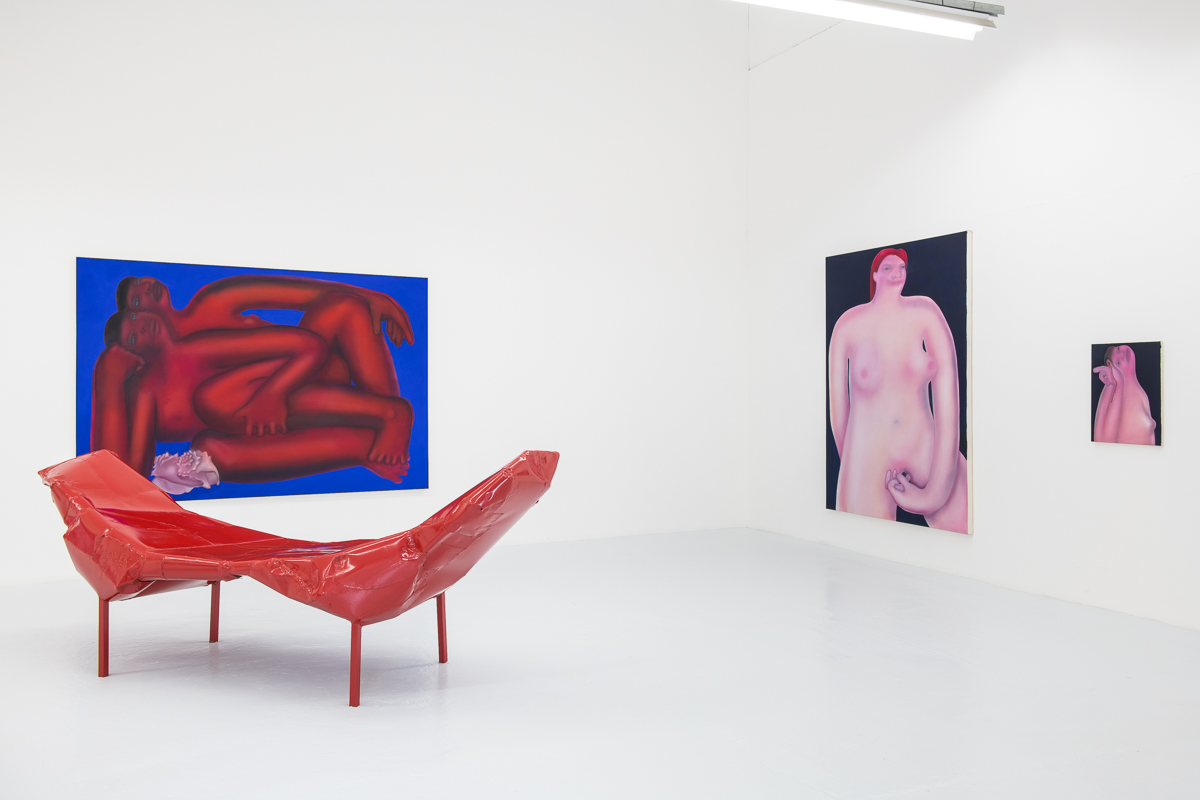Catalogue Essay
‘Baited Pleasures: The Precarity of Desire’
in George Rouy: Squeeze Hard Enough it Might Just Pop!
Hannah Barry Gallery, London
Written on the occasion of George Rouy’s first solo exhibition at Hannah Barry Gallery, Squeeze Hard Enough it Might Just Pop! (1 February — 17 March 2019)
The publication is the first with commissioned writing on the artist’s practice and features essays from myself and Caroline Levy-Mazella di Bosco, as well as an interview with the artist by Riccardo Pillon and Martina Tredeschi from Hannah Barry Gallery.
A limited edition run was printed to coincide the exhibition with a special number hand painted by the artist.

Edition of 50
Designed by Niall Reynolds
Published by Hannah Barry Gallery
Printed in London, 2019
︎︎︎Exhibition Images
︎︎︎Publication PDF

Extract —
“Although there are clear formal semblances between these paintings and George’s own oeuvre, it is their differences that really interest me. Whilst they all share the use of a nominal setting, human corporeality and a subtle balance of affect and force, what allures me is how their representation of desire and the erotic has shifted from a modern to contemporary formulation; reading from Deleuze, from an architecture of discipline to the “undulations of control.” Contrary to those who cite a timeless or spectral quality to George’s work, my contention is that his paintings are in fact wholly contemporary, reflecting a new form of desire which—unlike its forbearers of the modern age—does not follow from narratives of order and repression, but rather produces the erotic through a heterogeneous network of soft technologies, audiovisual techniques and insidious forms of affective labour.
It is no coincidence that George’s paintings are heavily influenced by social media and Photoshop. Straight away we recognise an affective shift from the surface of The Dance to George’s Four Lounging (2018). Figures no longer glide across the face of the canvas, they recede into the hollow screen of an iPhone. The twilight sky—once conjuring peace, frivolity and freedom—now invokes the cataleptic shock of a corrupted MacBook. Even the blades of grass seem stolen from a Clip Art catalogue; delicate brushstrokes are mistaken for digital airbrush. Where previous bodies were clearly delineated or crested with geometric edges, George’s bodies subtly bleed into one another: an arm becomes a hip, a head becomes a head. Their peculiar anatomies and bent postures recall Schiele’s raw corporeal forms and their soft composure plays with Moore’s organic modernism. However, where these artists looked to a natural or ‘real’ state for the human condition, George makes no such suggestion. The characters are synthetic, and unapologetically so.”